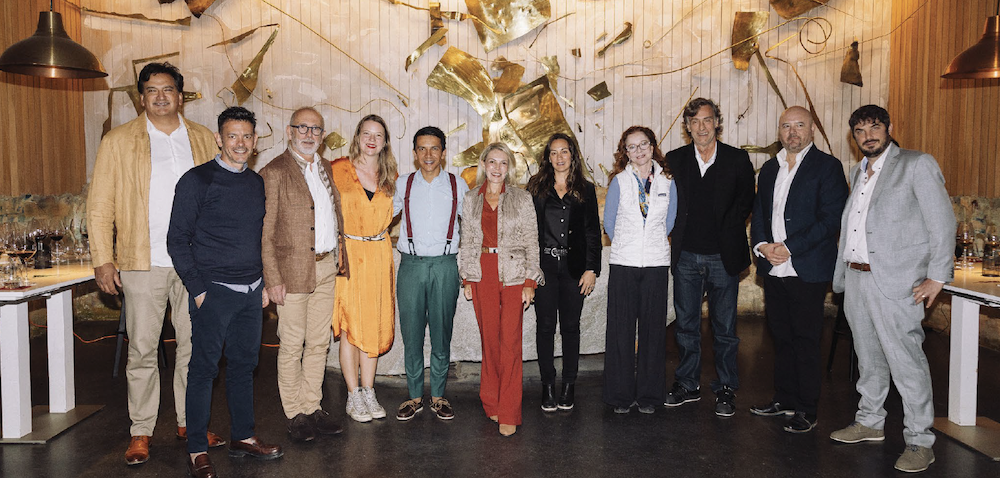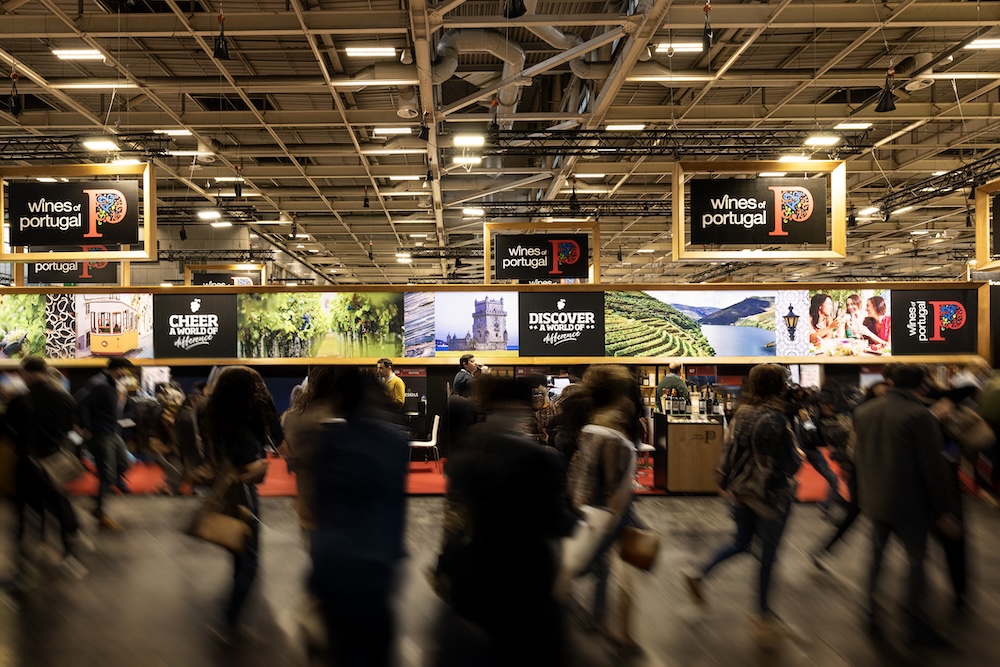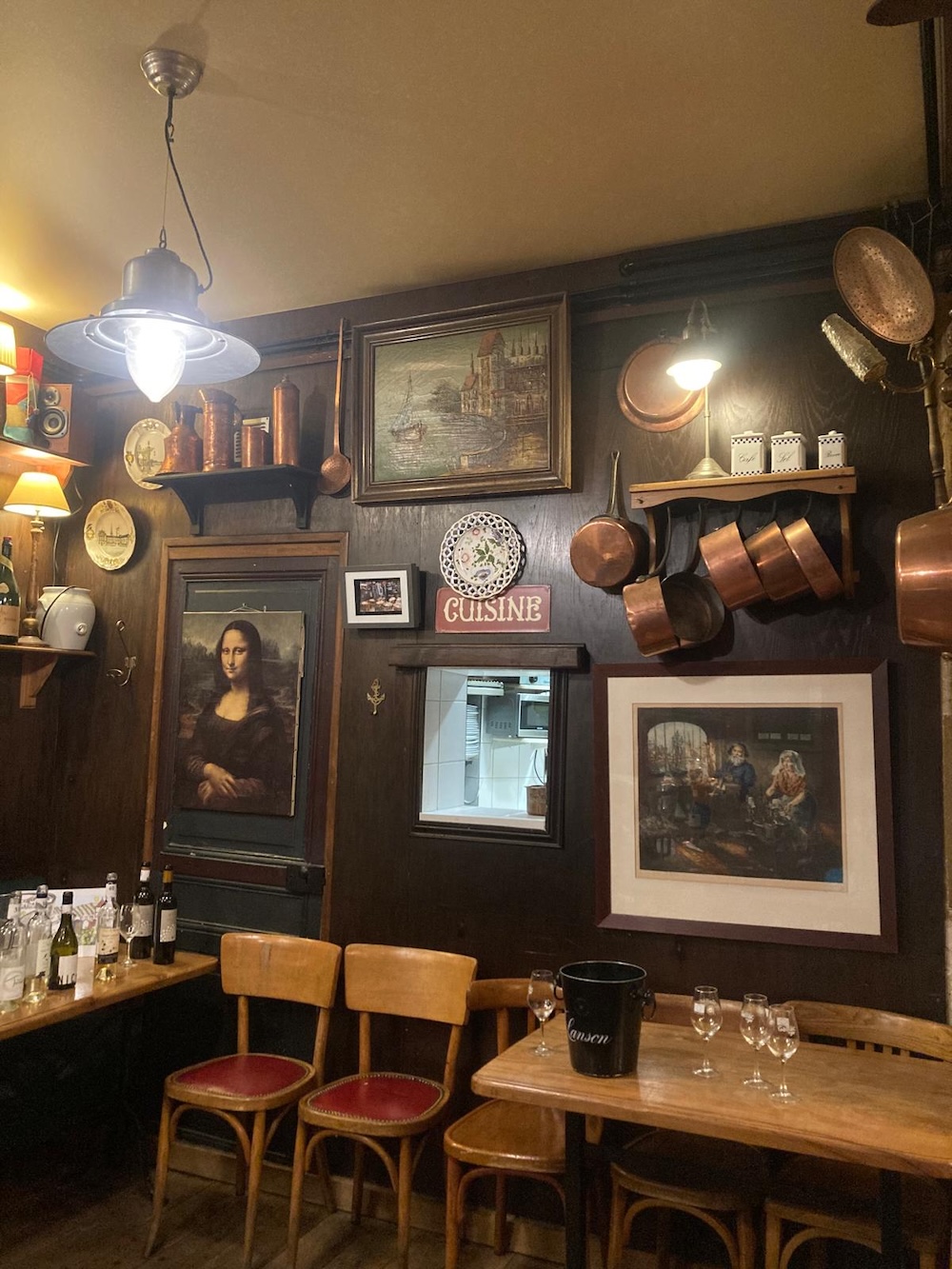
Discovery

Discovery
By Jean-Paul Burias, posted on 12 August 2024
Provence rosés are the stars of summer but they also bring joy all year round. Grown in a magnificent region in the South of France, they offer outstanding variety and are worth rediscovering for their joyful character and their wellness-inducing aromatic spectrum.
Some images flirt with perfection. The vineyards in the South of France shine for their unrivalled natural environment. Vines share the landscape with unforgettable hillsides and mountains, maquis on crystalline soils and garrigue on limestone. In this near-idyllic setting, the Mediterranean climate is just as felicitous – with its sunny, dry, hot weather, it offers vines 2,800 hours of sunshine a year. Buoyed by these natural assets, positive momentum and a global market in growth mode, Provence’s winegrowers showcase their proficiency by crafting balanced and distinctive quality rosés. A remarkable array of grape varieties features Grenache, Syrah, Mourvèdre, Cabernet-Sauvignon, Carignan, Cinsault and Tibouren, a long-standing cultivar along the Mediterranean rim with a hallmark pale salmon colour. The region produces 87% rosés, 9% reds and 4% whites over a total vineyard area of 27,000 hectares. It accounts for 40% of France’s domestic rosé production, spanning three major appellations – Côtes-de-Provence, Coteaux d'Aix and Coteaux Varois – which supply around 5.6% of the global market. Five village-designated appellations – Cassis, Bandol, Palette, Les Baux-de-Provence and Bellet – complete the roster with their own specific personalities and characterful, high-end rosés. This expertise allows the region to play a pivotal role in a booming industry with an international focus, aligning with the needs and desires of consumers.
Nestled amidst the national parks of the Luberon and the Verdon, Domaines des Bergeries de Haute-Provence has established a reputation as one of the region’s finest wine tourism sites. Its restored sheep barns and recreational areas offer an energising cocooning atmosphere. At its helm, Jean-Luc Monteil and Éloïse Massot produced their first vintage in 2020. The vines are farmed organically and biodynamically and the grapes are picked by hand. The eleven-strong varietal range is grown on soils that see no chemical inputs. “Our rosés show distinctive freshness due to the vineyard sites 600 metres above sea level”, says Massot. “The wines are fermented using natural yeasts and our Terracotta label, for instance, is matured for six months in amphorae”. In an era of climate change, these medium-elevation sites are demonstrating their efficiency in producing naturally fresh, balanced wines. “We want to produce fine, delicate, terroir-driven rosés for pleasure”, adds Monteil. “We have focused on re-launching a rosé made virtually entirely from Syrah in a crisp, appetising style with a deeper colour that can take people by surprise”. Although exports only account for a small share of sales – 20% - they offer some promising markets in Northern Europe and the West Indies.

Winegrower in action at Domaine des Bergeries de Haute Provence.

Jean-Luc Monteil and Éloïse Massot with their family.
In a stunning natural amphitheatre, the majestic landscape offers a breathtaking contrast with the Mediterranean Sea. Domaine de l’Olivette has been in the same family since the 18th century and has been gradually built up over the generations to its present-day 55 hectares planted on the hillsides of Le Castellet. Set in the heart of the Bandol appellation, vine growing is traditional here. Judicious intervention to manage soil fertility using only natural amendments precludes the use of chemical weedkillers and insecticides. The tenth-generation incumbent, Jean-Luc Dumoutier and his wife Élisabeth have undertaken extensive modernisation work in the winery which now boasts high-performance equipment. “Our characterful rosés make a great partner for tapas as an aperitif, but even more so for a meal of spicy dishes, grilled meats, baked fish and Mediterranean salads”, explains Dumoutier. “Bandol wines are blends that reveal stellar complexity. Mourvèdre fully instils typicity with its structure and spice notes”. The clay-limestone soils and cluster thinning help reduce yields and promote concentration in the wines. Consistently high standards produce a structured, fine range where aromatic complexity meshes perfectly with the flavour of food.

Domaine de l’Olivette with the Bec de l’Aigle in the background which peaks at 155 metres above sea level.

Jean-Luc Dumoutier, the owner of Domaine de l’Olivette.
For over half a century, the 300 wine growers at Estandon have pooled their knowledge of their vineyard sites to fully express a sense of Provence. This co-operative spirit is encapsulated in wines which encourage sharing and conviviality. The winery’s 20 million bottles – 90% of them rosé – are grown over 2,500 hectares of vineyards. It accounts for as much as 10% of Provence’s total production and 20% of its bulk wine sales. The wines reflect a commitment by its winegrowers to protect the environment – with 30% of the crop certified, Estandon is Provence’s leading organic co-operative. The company has also made a pledge to use environmentally-friendly packaging – its new organic range features lighter bottles, bio-based capsules and labels with reduce paper weight. “Our rosés echo the appellation”, explains marketing director Gaétan Hawadier. “They stem from a long-standing history, unrivalled soils and a distinctive climate. They reflect team work and a profound respect for the land and humanity”. The vineyard blocks entwine harmoniously with almond trees, olive groves, truffle oaks, lavender fields and umbrella pines, creating unique and varied landscapes. The co-operative sells wines in more than 40 countries and is extremely successful in the Netherlands, Great Britain and the United States.

Clémence, a grape grower at Le Thoronet.

Guy, a grape grower for estandon in Brignoles.

Harvesting grapes at Estandon.
Château Margüi ranks among the major Provence estates and offers an outstanding immersion into a unique natural environment. Built in 1784, the chateau displays all the features of the country manor houses of the time – with its 600 m2 footprint over three floors, it overlooks the formal gardens joined by an impressive staircase. This peaceful location suffused with the scent of lavender is surrounded by ancient oak trees and olive groves that come alive in summer to the sound of the cicadas. It has three natural springs that are used for the vineyards and offer nourishment for the fertile land farmed by passionate winegrowers. They produce aromatic, complex Coteaux Varois wines showing great freshness. “The contrast between day and night time temperatures has an influence on the ripening process of the fruit, producing good phenolic ripeness”, comments director Yann Jouët. “The diverse range of grape varieties in our 28 blocks allows us to adapt to each vintage and produce very elegant wines with lovely fruitiness and floral notes with no overpowering citrus and lovely sourness on the finish”.

Yann Jouet, the managing director of Château Margüi.

The cellar and its barrels at Château Margüi.
Located 300 metres above sea level, the village of Flayosc is home to a sublime setting of hills and olive groves set between the sea and the mountains. In 2018, Alain Sarran and his wife Ghislaine bought La Bastide des Terres Blanches surrounded by woodland with 150 olive trees and truffle oaks. The soils here are clay-limestone and the estate has eight hectares, two of which are home to bearing vineyards. “Our vision focuses on farming organically with vineyards certified High Environmental Value”, explains Alain Sarran. “This commitment implies favouring low yields but high quality. Our rosés are made primarily from Cinsault which produces a clear, light wine with low acidity and fruitiness. It is enjoyable from the aperitif through to dessert”. In just six years and armed with genuine talent, the couple has successfully met increased consumer demand whilst continuing to align with the high quality standards of the appellation.
Ghislaine and Alain Sarran at La Bastide des Terres Blanches.

A grape picker at Bastide des Terres Blanches.
For 72 years now, the history of Château Paquette has been inseparable from that of a long-standing family of winegrowers. Nestled amidst pine groves, the estate looks as if it is perched on the volcanic rocks of the Estérel mountain range, with the sea mist setting the tempo. Here, the winery has kept its original identity as a symbol of winegrowing expertise passed down through three generations. “We value the terroir and its unique geological origins”, stresses Jérôme Paquette. “The specific weather patterns benefit from a unique wind regime combining the Mistral and the Génois, sea breezes and wind hailing from the lower foothills of the Alps by night”. Grape varieties like Tibouren show concentrated site-expressiveness. The varietal’s fine spice characters are entwined with the delicate white fruit from the Grenache and the structure of Mourvèdre. “The winemaking process is as hands-off as possible”, adds Paquette. “I do not use sulphite during the process or any artificial techniques like adding inert gas. The Tibouren and Grenache grapes are soaked for two to three hours depending on the vintage. Usually, the Mourvèdre goes direct-to-press”. The results are impressive with wines that are very complex aromatically but are not overpowering and show great volume and perfect texture on the palate.

The team at Château Paquette with Jérôme Paquette on the right.
Set between the Maures mountain range and the Mediterranean, the vineyards here bask in a very propitious maritime micro-climate. Low rainfall combines with generous sunshine and fairly strong winds. Domaine de Château Vert has featured on land registry records since the 17th century and lives up to the colour in its name with its typical regional pine grove covering several hectares. Purchased by Robert Ghigo in 2010, it embraces 40 hectares including 30 of organically-farmed vineyards. Its coastal location is fairly unusual and now actually in town due to urban sprawl. “Everything has an impact, from the soil type to the nearby sea whose spray lends the wines their distinctive features such as their salty edge and great acidity”, comments Camille Ghigo, Robert Ghigo’s daughter. “On top of this is love and the attention we pay to every stage of production”. The range runs from PGI Var – with the user-friendly, enjoyable Sabine label – to Côtes de Provence rosé which is more complex with pronounced citrus notes, and the Séduction label with great complexity that makes it perfect for food. “Each wine is impacted by the grape varieties used and the age of the vines”, adds Camille Ghigo. “It reflects the single-vineyard selection with different types of soil, which is quite sandy for the PGI and clay-schist for the other appellations”.

Robert Ghigo tasting his wines.

Camille Ghigo, the daughter of Robert Ghigo who bought Domaine de Château Vert in 2010.
Genealogy records attest to the presence of the Sumeire family in the village of Trets as early as 1238. Sophie Sumeire-Denante and her brother Olivier Sumeire are now at the helm of this unique property located on the southern slopes of Mount Sainte-Victoire, where the clay-limestone soils coupled with a continental micro-climate lend their stamp to refined rosés. “The land where we have our roots is considered to be among the most unspoilt in France. It has very specific geo-climatic characteristics with mostly limestone and clayey-sandstone soils strewn with stones”, explains Sophie Sumeire-Denante. “The soils are poor with good drainage at a moderate elevation making them conducive to growing vines. By focusing on selection out in the field then in the winery, we do our utmost to craft balanced, elegant, fine wines”. One of the main objectives at Coussin is to preserve the typical freshness of the Sainte-Victoire mountain and to combine it with the traditional family craftsmanship passed down through eight generations of winegrowers with a firm rooting in Trets in Provence.

Sophie Sumeire Denante and her brother Olivier Sumeire.

Olivier Sumeire in his vineyard.
The impressive story of this family estate began in 1855 in the heart of the Coteaux d’Aix-en-Provence region when Emile Double bought Beaupré. The site offered a charming stop-over for his family and coaching inn for his horses on his trips out. Over the years, the winegrowing aspect developed amidst the unspoilt, bountiful surroundings home to vines, ancient plane trees and natural springs. However, it was not until 1971 that Christian Double, a young engineer, and his wife Marie-Jeanne took over at the winery’s helm and expanded the wine business. The dynamic, inventive Double reverted to ancient winemaking techniques, allowing the fruit to express its finest aromas and tannins. At the turn of the 21st century, his daughter, Phanette Double, joined him. After taking over the winery in 2003, she converted the vineyards over to organic in 2013. This year, she is celebrating her 20 years of winemaking with a new label that is both free-spirited and spontaneous. “Our rosés show distinctive palate weight and ripeness”, she comments. “The clay-limestone soils produce great freshness and the climate allows our grapes to ripen beautifully. We choose to work with Grenache and Cinsault for their finesse. When Syrah goes direct-to-press, it reveals wonderful spicy notes”.

Beaupré-Renaud Alouche : Marie-Jeanne and Christian Double, with Phanette Double, the manager of Château Beaupré, in the middle.

Phanette Double in her vineyards with her dog.
Undeniably, the winegrowers of Provence have successfully extended their product range. Both the vineyard sites and wine styles show variety. In addition to a choice of pleasant and very affordable entry-level wines are some real terroir-driven gems – these come from low-cropped vines and are skilfully produced using properly harnessed winemaking techniques. Also, their colour sets them apart and gives them their hallmark identity. These jewels in Provence’s crown display a distinctive bright, light colour, symbolising transparency and clarity. Although not a decisive buying cue, it offers an easily identifiable point of reference for consumers, particularly with regard to other French or overseas wine regions where the colour of rosé wines is darker. Covid may well have had an impact for a while, but this growth category is spearheaded by Provence rosés and offers a gateway to the world. The wines make the perfect match for Thai, Japanese, Indian or even North African cuisine, providing almost universal pleasure which is likely to grow in markets like Asia where consumption remains currently low.

Discovery

Discovery

Discovery